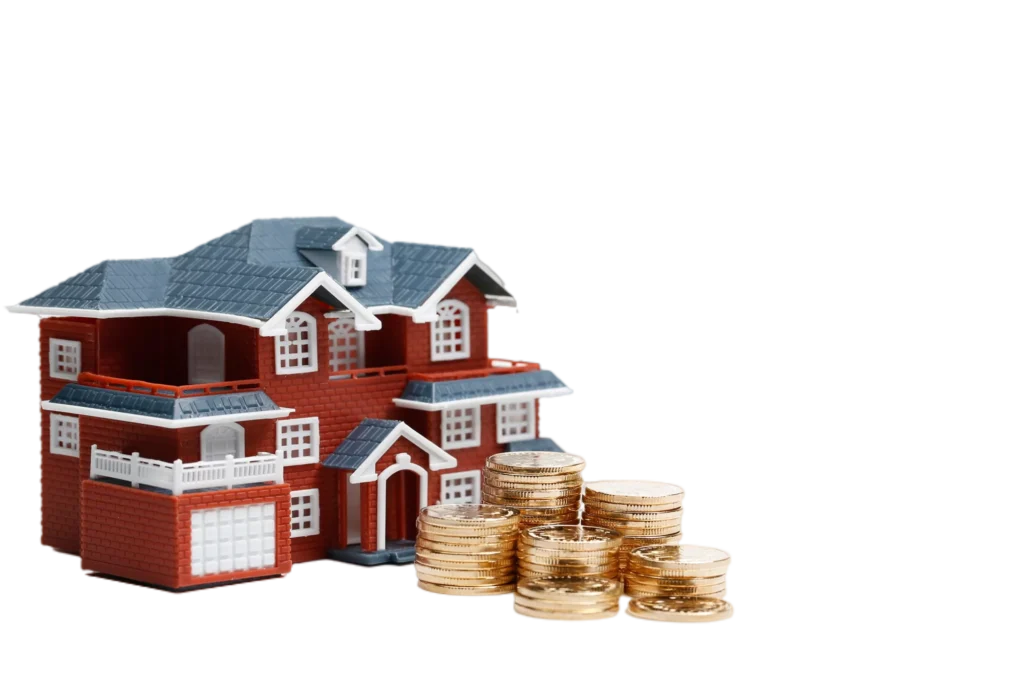What is a Reverse Mortgage?
A reverse mortgage is a type of home loan that allows homeowners aged 62 and older to access the equity in their homes without having to make monthly mortgage payments. Unlike a traditional mortgage, where the homeowner makes payments to the lender, a reverse mortgage allows the lender to make payments to the homeowner.
The main purpose of a reverse mortgage is to provide financial assistance to older homeowners who may be cash-strapped but have significant equity built up in their homes. By tapping into this home equity, reverse mortgages can help seniors supplement their retirement income, pay for medical expenses, or make home improvements.
How Does a Reverse Mortgage Work?
The basic mechanics of a reverse mortgage are as follows:
- Eligibility: To qualify for a reverse mortgage, the homeowner must be at least 62 years old and have significant equity built up in their home. The home must also be the borrower’s primary residence.
- Loan Amount: The amount of money the homeowner can borrow is based on several factors, including the homeowner’s age, the home’s appraised value, and current interest rates. Typically, the older the homeowner and the more valuable the home, the more the homeowner can borrow.
- Loan Disbursement: The homeowner can choose to receive the loan proceeds in a lump sum, as a line of credit, as a series of monthly payments, or a combination of these options.
- Loan Repayment: Unlike a traditional mortgage, the homeowner does not make monthly payments on a reverse mortgage. Instead, the loan becomes due and must be repaid when the last surviving borrower dies, sells the home, or moves out of the home for more than 12 consecutive months.
- Loan Costs: Reverse mortgages come with a variety of upfront and ongoing costs, including origination fees, closing costs, mortgage insurance premiums, and servicing fees. These costs are typically added to the loan balance, which means they accrue interest over time.
- Loan Balance: As the homeowner receives loan disbursements and the interest accrues, the loan balance grows over time. However, the homeowner (or their heirs) can never owe more than the value of the home when the loan becomes due.

Types of Reverse Mortgages
There are three main types of reverse mortgages:
- Home Equity Conversion Mortgage (HECM): The HECM is the most common type of reverse mortgage and is insured by the Federal Housing Administration (FHA). HECMs are generally the least expensive option for homeowners.
- Proprietary Reverse Mortgages: These are private-label reverse mortgages offered by banks, credit unions, and other financial institutions. Proprietary reverse mortgages may be more expensive than HECMs but can provide higher loan amounts for high-value homes.
- Single-Purpose Reverse Mortgages: These are offered by some state and local governments, as well as non-profit organizations. They are typically the least expensive option but can only be used for a specific purpose, such as home repairs or property tax payments.
Reverse Mortgage Eligibility
To be eligible for a reverse mortgage, the homeowner must meet the following criteria:
- Be at least 62 years old
- Own their home outright or have a low mortgage balance that can be paid off with the reverse mortgage proceeds
- Live in the home as their primary residence
- Have enough home equity to qualify for the loan amount
- Participate in a reverse mortgage counseling session with a HUD-approved counselor
Reverse Mortgage Costs
Reverse mortgages come with a variety of upfront and ongoing costs, including:
- Origination fee: This is a one-time fee charged by the lender to cover the cost of processing the loan. The maximum origination fee for a HECM is $6,000.
- Closing costs: These include fees for things like appraisals, title searches, and other services required to complete the loan. Closing costs can range from 2% to 5% of the home’s value.
- Mortgage insurance premiums (MIPs): HECMs require the borrower to pay an upfront MIP of 2% of the home’s value, as well as an ongoing annual MIP of 0.5% of the loan balance.
- Servicing fees: Lenders may charge a monthly servicing fee, typically around $30 to $35, to cover the cost of administering the loan.
- Interest: The interest rate on a reverse mortgage is typically a variable rate, which means it can fluctuate over time. The current interest rate for a HECM is around 4% to 5%.
It’s important for homeowners to carefully consider the costs of a reverse mortgage and compare them to other potential sources of funding, such as home equity loans or lines of credit.
Reverse Mortgage Repayment
The reverse mortgage loan becomes due and must be repaid when the last surviving borrower dies, sells the home, or moves out of the home for more than 12 consecutive months.
When the loan becomes due, the borrower (or their heirs) have several options for repayment:
- Sell the home: The proceeds from the sale of the home can be used to pay off the reverse mortgage loan, including any accrued interest and fees. Any remaining equity belongs to the borrower or their heirs.
- Refinance: The borrower (or their heirs) can refinance the reverse mortgage with a traditional mortgage or another reverse mortgage, if they qualify.
- Repay the loan: The borrower (or their heirs) can choose to repay the reverse mortgage loan in full using other assets, such as savings or the proceeds from the sale of other property.
It’s important to note that if the loan balance exceeds the home’s value at the time of repayment, the borrower (or their heirs) are not required to pay the difference. The mortgage insurance program covers any shortfall, protecting the borrower and their heirs from liability.
Reverse Mortgage Risks and Considerations
While reverse mortgages can provide valuable financial assistance to older homeowners, they also come with several risks and considerations:
- Depletion of Home Equity: As the loan balance grows over time, the homeowner’s home equity decreases. This can limit the homeowner’s options for the future, such as selling the home or using the equity for other purposes.
- Foreclosure Risk: Homeowners must continue to pay property taxes, homeowner’s insurance, and maintain the property. Failure to do so can result in foreclosure, even though the homeowner is not making monthly mortgage payments.
- Complexity and Potential for Fraud: Reverse mortgages can be complex financial products, and there have been instances of fraudulent activities targeting older homeowners. Careful research and counseling are essential to avoid these risks.
- Impact on Government Benefits: Reverse mortgage proceeds may be considered assets, which could affect the homeowner’s eligibility for need-based government benefits, such as Medicaid or Supplemental Security Income (SSI).
- Heirs’ Considerations: When the last surviving borrower dies, the heirs may be faced with the decision of whether to keep the home and repay the reverse mortgage or sell the home to pay off the loan. This can create financial and emotional challenges for the heirs.
Reverse Mortgage Counseling and Protections
To help protect homeowners, the federal government requires that all reverse mortgage applicants participate in a counseling session with a HUD-approved reverse mortgage counselor. During this session, the counselor will explain the reverse mortgage process, discuss the homeowner’s options, and ensure the homeowner understands the potential risks and benefits.
Additionally, reverse mortgages are subject to several consumer protections, including:
- No Negative Equity Guarantee: Homeowners (or their heirs) can never owe more than the value of the home when the loan becomes due, even if the loan balance exceeds the home’s value.
- Right of Rescission: Homeowners have a 3-day right to cancel a reverse mortgage after closing, without penalty.
- Prohibition on Misleading Advertising: Lenders are prohibited from using deceptive or misleading advertising practices when marketing reverse mortgages.
Reverse Mortgage Alternatives
For some homeowners, a reverse mortgage may not be the best option. Alternative sources of funding for older homeowners include:
- Home Equity Loans or Lines of Credit: These traditional home equity products allow homeowners to access their home equity without the upfront costs and ongoing fees associated with a reverse mortgage.
- Downsizing or Selling the Home: Selling the current home and moving to a smaller, less expensive property can provide a lump sum of cash while potentially reducing ongoing housing costs.
- Government Assistance Programs: Some state and local governments offer programs that provide financial assistance to older homeowners, such as property tax deferral or home repair grants.
- Retirement Savings and Other Assets: Homeowners may be able to supplement their income by drawing on other retirement savings or assets, such as investments or annuities.
It’s important for homeowners to carefully consider all of their options and seek the advice of a financial advisor or reverse mortgage counselor before making a decision.
Conclusion
Reverse mortgages can be a valuable financial tool for older homeowners, providing access to home equity without the burden of monthly mortgage payments. However, these loans also come with significant risks and costs that must be carefully considered. By understanding how reverse mortgages work, the different types available, and the potential alternatives, homeowners can make an informed decision about whether a reverse mortgage is the right choice for their financial situation.
Also Read:
- Retiring Rich: The 5-Step Wealth Plan Nobody Talks About!
- Secrets of Millionaires: How They Build Wealth in Any Market
- The Debt-Crushing Secrets No One Told You – No Matter Your Age!
- Top Cryptocurrencies to Watch in 2025.
- The Rise of Decentralized Finance (DeFi) and How to Invest
Popular Category:




